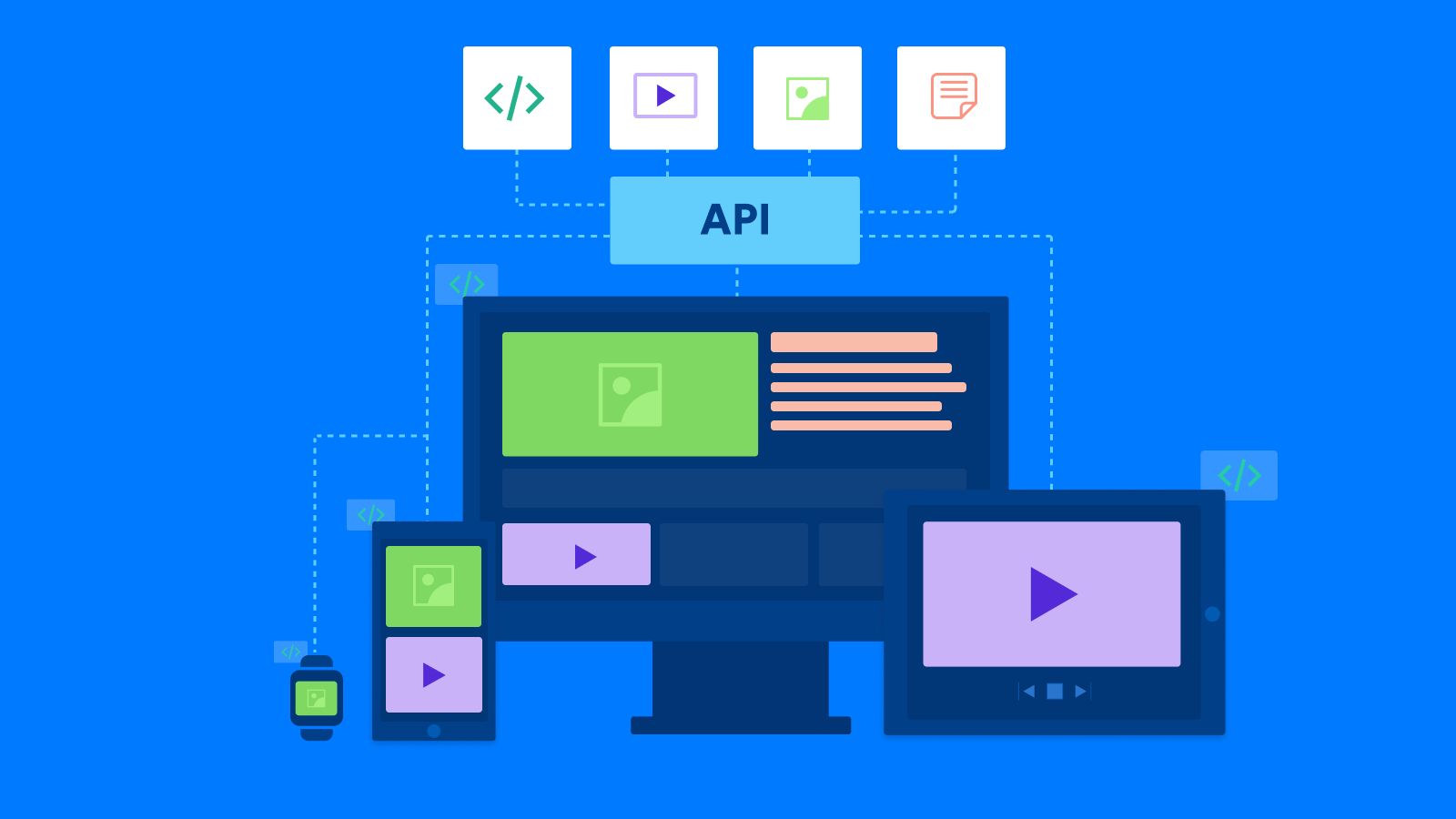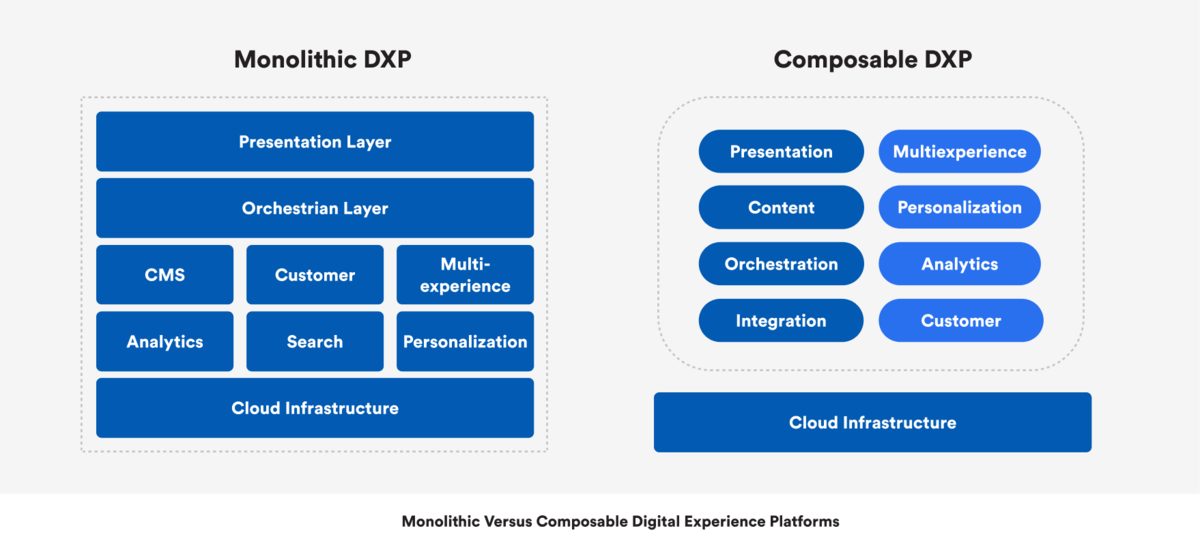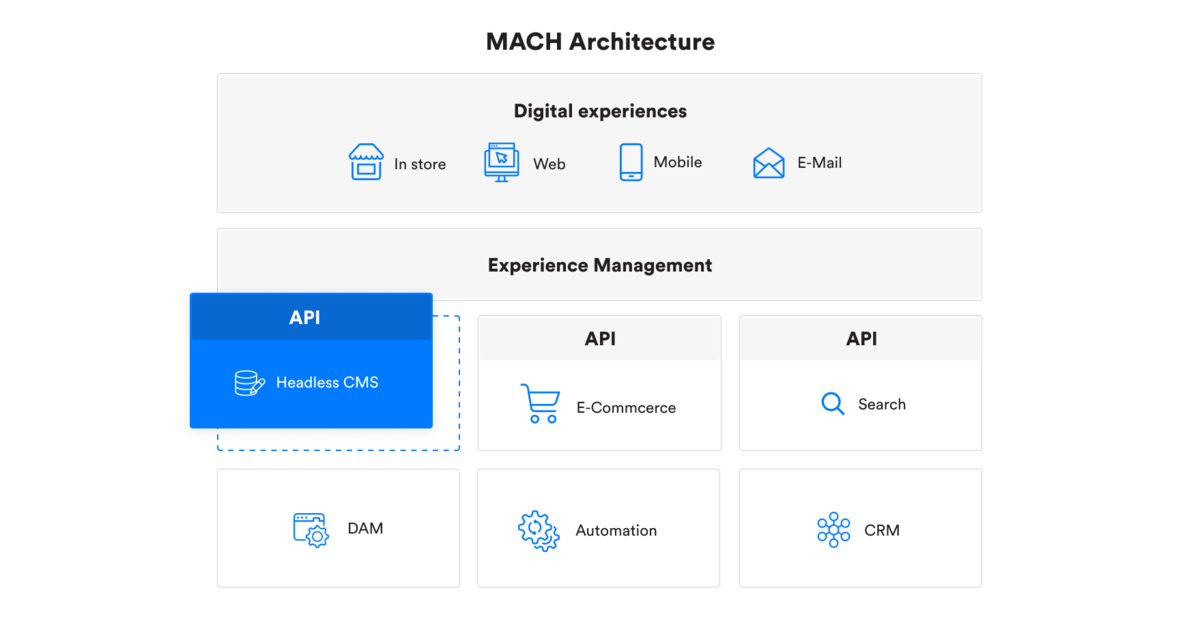In today's fast-paced digital landscape, content management plays a crucial role in shaping the success of your online presence. Whether you're responsible for maintaining an existing system or planning a digital transformation, choosing the right content management approach is essential.
In this blog post, we'll dive into the differences between Headless Content Management Systems (CMS) and Composable Digital Experience Platforms (DXP). We'll explore the pros, cons, and architectural aspects of each, helping you make an informed decision that aligns with your project's goals.
I. Composable and Monolithic DXP Architecture
Imagine you're building a digital web project, and your CMS options are like choosing between a superhero with a full wardrobe and one who's only got capes. Well, that's a bit like comparing a Composable or even a Monolithic DXP to a Headless CMS. The Composable DXP is like that superhero with a full wardrobe—it's got everything under one roof, from the fancy costumes to the high-tech gadgets. Need a website? Done! E-commerce? No problem! Marketing automation? You got it! It's your one-stop-shop for all your digital needs, and it's ready to leap into action at a moment's notice. So, if you prefer your superheroes to be well-prepared and fully equipped, the Composable DXP might be your digital crusader of choice!
Monolithic DXPs are suite tools that offer various tools as a complete package. These different services are all managed by a single vendor, which often leads to increased complexity and difficulty integrating with tools outside the suite.
Modular or Composable DXPs, on the other hand, are Digital Experience Platforms built from a set of easily integrated best-of-breed tools. Modular DXPs provide more flexibility and customizability than Monolithic DXPs since they follow a modular architecture. With this approach, various tools can be combined using APIs, allowing them to create impactful and compelling digital experiences.
But in real. A Composable Digital Experience Platform (DXP) combines content management, e-commerce, marketing automation, and other features into a single integrated system. It offers an all-in-one solution for managing your digital presence. A Composable DXP is a platform that allows the integration of multiple technologies through APIs and microservices.
It must be said, there are many DXP Systems that can also be used as Headless CMS, Ibexa DXP is one of those, where content can be managed on Saas in the cloud, with full customization of content classes and components and provide this to systems over its powerful API.
Pros of Composable DXP
Integrated Features and Functionalities:
Composable DXPs provide a cohesive suite of tools, streamlining the management of content, e-commerce, and marketing.
Examples: Adobe Experience Manager, Sitecore, Liferay DXP, Ibexa DXP
Easier Content Management for Non-Technical Users
Monolith DXPs often offer user-friendly interfaces, making it simpler for non-technical teams to create and manage content.
Examples: Kentico, Acquia, Episerver (Optimizely CMS)
Faster Time-to-Market
Integration of various components can speed up development and deployment, reducing time-to-market.
Examples: Oracle Content and Experience, SAP Hybris, Bloomreach
Cons of Composable DXP
1. Limited Flexibility: Composable DXPs may not offer the same level of flexibility as Headless CMS when it comes to creating custom user experiences or integrating with third-party services.
2. Vendor Lock-In: Choosing a Composable DXP may lead to vendor lock-in, making it more challenging to switch providers or adapt to changing technology trends. (But keep in mind, this also relates to Headless CMS!) API’s are different, export / import of is often not so simple as it seems initially.
Architectural Overview
Composable DXP architecture tightly couples content management, e-commerce, and other functionalities in a single system, making it convenient for organizations looking for an all-in-one solution.
The three main components of a DXP are content management, personalization, and presentation. The first step for a composable architecture is to stop seeing the platform as an immovable monolith and start seeing it as a series of components that can be removed, replaced, and improved.
II. Headless CMS
But what about our quirky friend, the Headless CMS? Well, it's a bit like a superhero who insists on buying all their accessories separately and crafting some on their own. They've got a fantastic superpower—the power of flexibility. Want a fancy costume? You'll have to design it yourself. Need a utility belt with cool gadgets? Better start shopping around for individual components. Want to add a rocket launcher to your arsenal? Well, time to build it from scratch! While the Headless CMS gives you the freedom to choose each piece of your digital toolkit and customize it to your heart's content, be prepared for a bit more DIY action. It's like having a superhero with an amazing skill set but a never-ending shopping list for crime-fighting gear. So, if you enjoy the thrill of creating something entirely unique, the Headless CMS is your digital superhero, ready to assemble their accessories one API call at a time!
Headless CMS are a trend in the MACH architecture. Alone the Headless CMS don't do much, they are actually content containers with almost no logic.
A Headless CMS is a content management system that separates content creation and storage from content presentation. It provides content through APIs, enabling developers to deliver content to various channels and platforms independently of the presentation layer.
All the other components need also to be built, connected and defined. The frontend “Digital experience” part is often created by JavaScript frameworks like React.js, Angular or Node.js which need to contain also the whole logic of the systems.
Pros of Headless CMS
1. Flexibility and Scalability
Headless CMS allows for greater flexibility in designing user experiences and scaling to different channels, such as websites, mobile apps, IoT devices, and more.
Examples: Contentful, Strapi, Kontent.ai
2. Multichannel Content Delivery
With Headless CMS, you can easily repurpose content for different platforms, ensuring a consistent message across all touchpoints.
Examples: Prismic, Sanity, Contentstack, AgilityCMS
3. Improved Developer Experience
Developers enjoy the freedom to use their preferred programming languages and frameworks, resulting in a more efficient and enjoyable development process.
Examples: ButterCMS, GraphCMS - Hygraph, DatoCMS
Cons of Headless CMS
Steeper Learning Curve: Learning to work with Headless CMS might require some adjustment, especially for those accustomed to traditional monolithic systems.
Increased Complexity in Managing Content: Managing content across multiple channels and platforms can be challenging, requiring careful planning and coordination.
Architectural Overview
A typical Headless CMS architecture includes a content repository, a content management interface, and APIs to serve content to various clients. It's a decoupled approach that empowers developers to choose the best technology for the front-end.
III. Comparing Headless CMS and Composable DXP
A. Flexibility and Scalability
- Headless CMS: Offers greater flexibility and scalability by allowing developers to use their preferred technology stack. Scalability depends on the chosen architecture and infrastructure. It can scale horizontally to handle increasing content loads and traffic by distributing content through APIs to various endpoints.
- Composable DXP: Provides flexibility through pre-built components and integrations, allowing non-technical users to assemble digital experiences quickly. However, it may have limitations in terms of customizing every aspect of the presentation layer. This can be mitigated by using Netgen Layouts for example. Typically offers scalability out of the box, as it's designed to handle various digital experience components and services. However, scalability might be constrained by the platform's predefined modules and integrations.
B. Content Delivery
- Headless CMS: Provides content through APIs, enabling developers to deliver content to multiple channels and devices, including web, mobile apps, IoT devices, and more. This approach allows for tailored content delivery, but frontend logic needs to be rebuilt often on each platform.
- Composable DXP: Offers content delivery through predefined templates and modules, making it easier for non-technical users to publish content consistently across channels. However, it may have limitations when it comes to highly customized content delivery. Thou, if your DXP has a great API, this can still allow you to independently build your custom technology frontends.
C. Developer Experience
- Headless CMS: Attracts developers with its flexibility and freedom to innovate. Offers a developer-friendly experience, as developers have the freedom to choose their frontend technologies, frameworks, and libraries. They can work with the tools they are most comfortable with.
- Composable DXP: Simplifies development but may constrain developers to the platform's capabilities. Provides a more streamlined development experience by offering pre-built components and integrations. This can speed up development for non-technical users but might limit developers' flexibility in some cases.
D. Ease of Use for Non-Technical Users
- Headless CMS: Typically requires technical expertise to set up and configure the frontend presentation layer. However, once set up, non-technical users can manage content with an intuitive interface.
- Composable DXP: Offers a user-friendly interface for non-technical users to create and publish content, as it often includes drag-and-drop functionality and templates. However, it may have limitations when it comes to complex content structures or custom design requirements.
E. Time-to-Market
- Headless CMS: May require more time for initial setup and development of the presentation layer, especially if custom frontend development is involved. However, it can provide faster content updates and adaptations once the infrastructure is in place.
- Composable DXP: Typically offers a shorter time to market for building and deploying basic digital experiences, thanks to its pre-built components and templates. However, it may require more time for extensive customization or unique digital experiences.
F. Cost Considerations
- Headless CMS: Cost-effectiveness depends on the chosen platform and the need for additional services. at scale TCO is often underestimated and results on higher costs on the long run.
- Composable DXP: Typically comes with higher initial costs but may provide a comprehensive set of tools.
In summary, the choice between a Headless CMS and a Composable DXP depends on your specific project requirements and the balance you want to strike between flexibility, ease of use, scalability, and time to market. Headless CMS is more suitable for projects that require high customization and control, while Composable DXP is better for projects that prioritize rapid development and ease of use for non-technical users.
IV. Use Cases and Scenarios
When to Choose Headless CMS
- Content-Focused Projects: Ideal for organizations heavily focused on content delivery across multiple platforms.
- Complex, Multichannel Content Delivery: Suitable for projects with a diverse range of content channels.
Pricing Considerations for Headless CMS:
Headless CMS platforms often offer pricing models based on usage, which can include factors like the number of content items, API requests, or users. Pricing tends to scale with the size and complexity of your project. Here are some pricing-related factors to consider:
- Scalability Costs: As your project grows and requires more content or API requests, your costs may increase accordingly. Ensure that the pricing model aligns with your scalability needs.
- Licensing Costs: headless Platforms are often priced by content object and features like API Calls. Large amounts of content will increase pricing and keep you dependant. Costs are often overseen.
- Developer Costs: Consider the cost of developer time and expertise required to set up and maintain the Headless CMS. While some platforms offer free tiers, enterprise-level support and features may come at a higher cost.
- Third-Party Integration Costs: If you plan to integrate third-party services or tools, factor in any associated costs, which can vary depending on the complexity of the integrations.
- Hosting Costs: While some Headless CMS platforms offer hosting as part of their service, others may require you to host your content separately, adding hosting expenses to your TCO.
When to Choose Composable DXP
- Integrated Digital Experience Requirements: Beneficial when you need an all-in-one solution for content, e-commerce, and marketing.
- Simplicity for Non-Technical Teams: Appropriate for organizations with non-technical teams that need easy-to-use content management tools.
Pricing Considerations for Composable DXP:
Composable DXP platforms typically follow a more traditional licensing model, where you pay for the platform's features and services as a package. Here are some pricing-related factors to consider:
- Licensing Costs: Composable DXPs often involve upfront licensing fees, which can be substantial, and ongoing subscription costs. Pricing may vary based on the features and user levels you require.
- Add-Ons and Extensions: Some advanced features or extensions may come at an additional cost. Ensure that you understand what is included in the base package and what might require extra investment.
- Implementation and Integration Costs: Implementing a Composable DXP can involve significant development and integration efforts. Budget for development and customization work, which can impact your TCO. This may depend on the DXP Vendor you have massively. Differences are often huge.
- Maintenance and Support: Consider the cost of ongoing maintenance, updates, and support services provided by the DXP vendor. Some cloud vendors minder the costs of such maintenance.
When evaluating the TCO of both Headless CMS and Composable DXP, consider factors such as the scale and complexity of your project, your organization's specific needs, and your long-term growth plans. Be sure to request detailed pricing information from vendors and factor in all associated costs to make an informed decision that aligns with your budget and goals.
V. Conclusion
In the digital age, choosing the right content management approach is crucial for your project's success. Headless CMS and Composable DXP or Monolith DXP each have their strengths and weaknesses, making them suitable for different scenarios. Consider your project's requirements, scalability needs, and the expertise of your team when making a decision.
Remember, technology is always evolving, and what works best today may not be the optimal choice in the future. Stay informed about emerging trends and be ready to adapt your content management strategy accordingly.
For more in-depth information and assistance in choosing the right content management approach for your project, feel free to contact our expert team at Netgen. We're here
Composable DXPs may not offer the same level of flexibility as Headless CMS when it comes to creating custom user experiences or integrating with third-party services.


